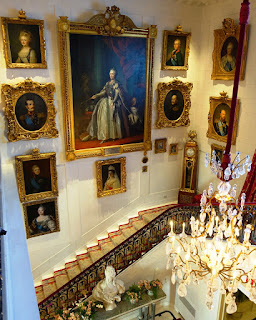It's already old news, but for a while in the Taiwan-centric blogosphere, the viral video of a Taiwanese lout verbally harassing a British man and his Taiwanese girlfriend on the Taipei metro, was the only news that mattered, getting posted and re-posted, and commented upon, to the point where I didn't even need to sit through the entire 14-minute video to know what was going on. The incident didn't surprise me in the least, as I've always been aware that racism is deeply embedded in Taiwanese society. Taiwan is a multi-ethnic society in which the "ethnic card" gets frequently played in local politics. Many times in my classes when I was teaching there I would have adults make statements about members of the Hakka community or aboriginal groups in terms that would definitely be considered politically incorrect in the West. The flipside of the obsession with having pale, white skin (as reflected in the numerous TV ads for skin-whitening products) is a denigrating attitude towards those Taiwanese with darker complexions, many of whom live in the southern part of the island. And, of course, there is a deep-rooted xenophobia, as referred to in the BBC article which I've linked above.
For me, Taiwan was a place where people were constantly remarking on my very existence in their presences, and often not in a complimentary manner. I don't know how many times I would hear the expression "big nose" in the Taiwanese dialect, which people would often use knowing that very few foreigners could understand the local language. The supposed "kindness" shown toward big noses that so many Western residents seem to revel in for me smacked of a not-too-subtle reminder that I was always going to be on the outside, no matter how long I'd been living there or the fact that I had married a local woman and had a bi-cultural child. And speaking of my daughter, despite the fact she is an R.O.C. citizen and fluent Mandarin speaker, she was often referred to as being "foreign" (even by her own grandmother, though not meant in an insulting manner) - fortunately, she was too young at that time to understand what people were really saying.
Reading the BBC article, I was particularly bemused by the Taiwanese woman referring to so-called "white privilege". While I wish women had been flocking to me (they weren't), all that "power" I supposedly had didn't stop people from laughing about me while I was standing in front of them, let alone the woman who tried to sue me by making false hit-and-run accusations (thank god for CCTV cameras at traffic intersections!). Then there is the common knee-jerk reaction to accusations of discrimination and racism in Taiwan by pointing out examples of such against Taiwanese in Western countries. A comparison I find humorous, for not only is it a weak attempt to deflect attention away from the real issue(s), it also ends up being an unintentional admission that Taiwan is a society where xenophobia quite often rears its ugly head.
While the hoopla over the MRT video was being played out on social media, I was wondering how those Westerners who seem to feel that Taiwan is nothing short of an earthly paradise were reacting to the news. These are the folks who time and time again, when someone puts up a post on Facebook extolling the honesty or kindness or some other wondrous virtue of the people of Taiwan (usually through a personal experience such as having a wallet returned), fill the comments with replies such as "That's why I love Taiwan!" or "Taiwan is the best!" or some such nauseatingly naive observation, as if the act of being a Good Samaritan was the exclusive domain of the Taiwanese. Has the video served as a wake-up call, a realization that behind the smiling faces lie thoughts of an insulting, demeaning nature? Or will they find a why to dismiss, excuse or rationalize the behavior of Mr. Liao, the ogre on the subway, as an exception to the otherwise beautiful lives they have carved out for themselves on the Beautiful Isle? I suspect most of them will do the latter, preferring the blinders over seeing the bigger picture.
And perhaps there is some truth to being white and privileged. Just ask the factory worker from Thailand or the Filipina caregiver about how much their hearts have been touched by Taiwan.
Meanwhile, in this country, which of course has its own problems, Amber and I took a drive yesterday into Maryland horse country, stopping at the Woodstock Equestrian Park in rural Beallsville. Our purpose wasn't to go to riding, but to take an easy hike along an appropriately-named Field's Edge Loop trail. The path did just that, making a long loop around rolling farmland under a bright blue sky. It was far from a "hike", actually, being more of a leisurely walk up and down gentle slopes, but it felt great to be outdoors, chasing the few remaining butterflies and grasshoppers as winter prepares to set in, and watching V-shaped formations of geese flying overhead. We even got to see a few horses on a jumping course as we were leaving. On an afternoon such as yesterday's, all was briefly right with the world.





























































